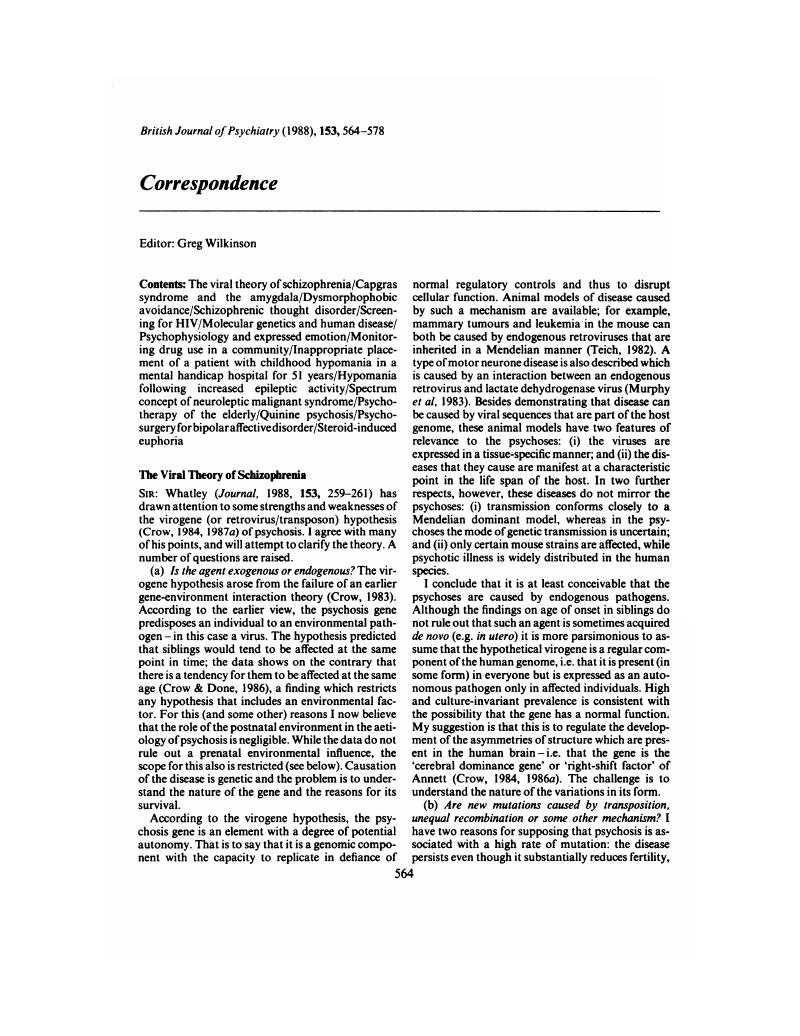Crossref Citations
This article has been cited by the following publications. This list is generated based on data provided by Crossref.
Crow, Timothy J.
1990.
Recent Advances in Schizophrenia.
p.
81.
Crow, Timothy J.
1991.
Psychiatry and Biological Factors.
p.
9.
Platsoucas, Chris D.
and
Oleszak, Emilia L.
2007.
Human autoimmune diseases are specific antigen-driven T-cell diseases: identification of the antigens.
Immunologic Research,
Vol. 38,
Issue. 1-3,
p.
359.
Morera-Fumero, Armando L.
Díaz-Mesa, Estefanía
Abreu-Gonzalez, Pedro
Fernandez-Lopez, Lourdes
and
Cejas-Mendez, Maria del Rosario
2017.
Day/night changes in serum S100B protein concentrations in acute paranoid schizophrenia.
Progress in Neuro-Psychopharmacology and Biological Psychiatry,
Vol. 75,
Issue. ,
p.
207.




eLetters
No eLetters have been published for this article.